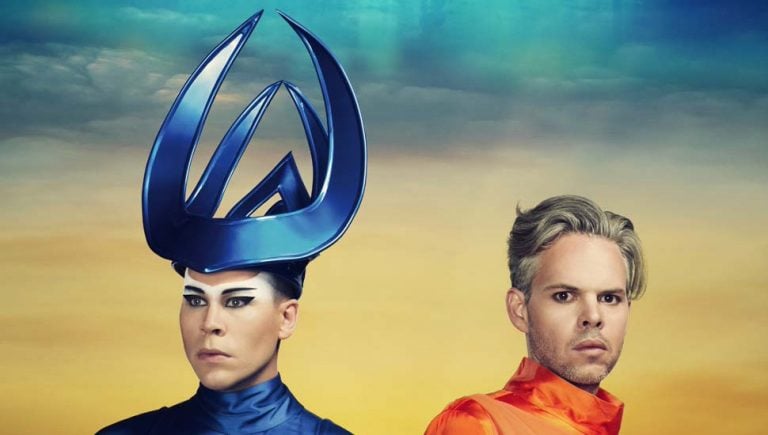Dance music is a fluid thing, constantly changing between different clubbing generations, but something remains constant: if a song is a banger, it remains a banger forever.
Take ‘Work’, which seminal Scottish DJ Kevin McKay brought back to the grooving masses last year.
In 2001, iconic house duo Masters at Work first dropped the track, with ‘Work’ sounding instantly unforgettable due to its intoxicating mixture of soulful soca rhythms, deep house energy, and a vocal dripping in infectious confidence courtesy of Denise Belfon.
Just over 20 years later, McKay realised the enduring quality of ‘Work’ while performing with Armând at Night Tales in Hackney, London; as soon as the DJ mixed ‘Work’ a cappella with a propelling house cut, the crowd went wild.
The onlooking McKay was immediately inspired, going on to make his own edit, and after months of searching eventually located Pupa Nas T, the producer and co-writer of the original.
Luckily, he was impressed by McKay’s vision, giving him his blessing to rework ‘Work’ for modern audiences. The results were instantaneous: ‘Work’ blew up everywhere last year, including on Beatport, Shazam, TikTok, and Radio 1 and 1Xtra; dancefloors around the U.K. and Europe once again shook to Belfon’s sassy vocals, while the likes of Fatboy Slim and David Guetta gave it the seal of approval. House music really never dies.
Love Music?
Get your daily dose of metal, rock, indie, pop, and everything else in between.
It wasn’t a surprise that McKay’s decision was vindicated, because there hasn’t been many more consistent producers in electronic music over the last 30 years. From forming and running Glasgow Underground Recordings to going it alone on his solo work, McKay has barely stopped for breath since the early ’90s.
That got us thinking: what does this Northern Hemisphere house icon think of Australia’s electronic music scene? Following his huge success with ‘Work’, Tone Deaf caught up with McKay to discuss his top five Australian electronic artists of all time, which you can find out below (in no particular order).
Kevin McKay’s ‘Work’ (ft. Pupa Nas T, Denise Balfon) is out now via Glasgow Underground Recordings.
Empire of the Sun
I love hearing electronic music both at home and on the dancefloor. My favourite artists create pieces that work in both settings. I was lucky to produce an album that defined that feeling in the 2000’s (Mylo’s Destroy Rock & Roll). Empire of the Sun’s Walking on a Dream was another excellent record from that era. Luke Steele’s voice sounds incredible in a club (so much so I’ve done an edit of the title song from the album to play out), and the production, courtesy of PNAU’s Nick Littlemore, is outstanding. The album only left the CD player in my car when my car stopped having a CD player!

Michael Hutchence
“INXS? Electronic?” you might say! And yes, if I was citing INXS here, I might be stretching the brief somewhat (although ‘Mediate’ was a definite Balearic influence in my early years). However, Hutchence’s work as Max Q influenced my early DJing years. I loved DJing at house parties and after parties as much as I liked DJing in clubs, and the Land of Oz (Paul Oakenfold & Steve Osborne) remix of ‘Sometimes’ was a staple in those settings when it came out at the end of 1989. Like with Empire of the Sun, the self-titled Max Q album never left my stereo and hugely influenced the type of dance music I wanted to make.

Kylie Minogue
As well as being a massive house head, I love dance records that transcend nightclubs and become proper cultural phenomenons – the kind of tracks that go off in equal amounts at the end of an ultra-cool DJ set and your cousin’s wedding. Kylie has many fantastic records in her lexicon, but ‘Can’t Get You Out of My Head’ is exceptional. I’ve played it to huge screams at weddings (including my cousins!) and heard edits of it played in cool-as-you-like venues by hipster DJs. But, of course, Kylie is so much more than that record; she is one of the iconic dancefloor sirens of our time.

Sia
I’ve been a fan of Sia since I first heard the Zero 7 album in 2001. The album influenced the sound I wanted to project with the slower tracks on the Mylo album. Her contributions, in particular, stood out. I love how she has directed her career and her songwriting contributions to some of my favourite pop artists (Beyoncé, Rihanna). Still, she is on this list mainly because of ‘Titanium’. It’s not a song I’ve played much as a DJ (weddings aside!), but it is undeniably one of the greatest dance songs since the disco era. It has everything I want from a bona fide anthem; driving vocals, incredible lyrics and a maximum emotional payoff.

Sam La More
I’ve already mentioned Sam’s brother in (1), and rather than add PNAU (another of my favourites!), I’m adding him solo. DJing in the 2010s, his remix of The Bag Raiders’ ‘Way Back Home’ was one of my go-to tunes. In terms of dance production, I rated him alongside Eric Prydz as one of the finest exponents of club music at the time. When I started making dance music, the details didn’t matter as much as the overall content of your music. As technology progressed and nightclub sound systems advanced, the details became more critical. Sam was kind enough to share some of his production techniques with me, and they helped transform my mixes to the level they needed to compete in the modern era.


































